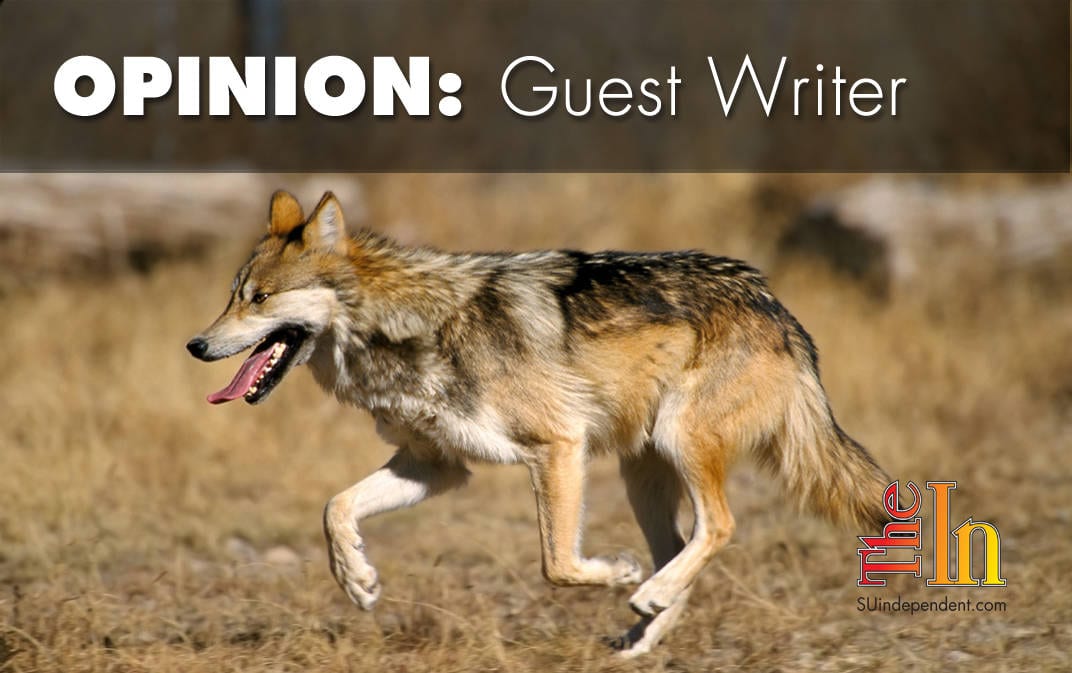
By Kirk C Robinson
April 28 of 2016 marked 40 years since the listing of the Mexican gray wolf (lobo) under the Endangered Species Act.
Mexican gray wolves are smaller cousins of Rocky Mountain gray wolves and are native to northern Mexico and the southwestern United States, including parts of Southern Utah. Like their cousins to the north, they were widely exterminated by settlers who refused to share the land with them. When they were on the very brink of extinction, the last seven Mexican gray wolves in the entire world were captured and a captive breeding program was begun in order to save the species.

In 1976 the Mexican gray wolf was given protection under the Endangered Species Act. In 1998, the first captive Mexican gray wolves were reintroduced into the Blue Range on the Arizona and New Mexico border. Unfortunately, the population has struggled ever since then. At the beginning of 2015 there were an estimated 110 lobos in the wild — the highest since reintroduction — but at the beginning of this year, 18 years after reintroduction, only 97 were counted. What’s wrong?
Real recovery of the Mexican gray wolf will require more wild individuals in more places. The main problem is that the U.S. Fish and Wildlife Service, the federal agency charged with recovering the species, has not been diligent in doing its duty. And the main reason for this is that the state governments of the four-corner states — Arizona, New Mexico, Colorado and Utah — have thrown up every obstacle they can concoct to thwart recovery efforts.
It is a salient fact that all living lobos share the genes from the seven founders. The result is what geneticists call “genetic depression,” which means fewer pups being born, lower pup survival rate, and a compromised ability of the larger population to adapt to new or changing environments. This greatly complicates recovery strategy.
Because it is small, the current wild population has even less genetic variation than the captive population. This could be significantly remedied by Fish and Wildlife introducing more captive-bred wolves into the wild. Unfortunately, the agency has been very slow to act for fear of a furious backlash from a small but vociferous coterie of special interests, consisting mostly of ranchers and hunters who fear and hate wolves and the state governments that cater to their ignorance and hatred.
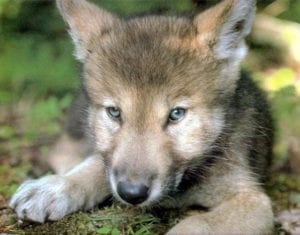
On a positive note, two captive-born pups were recently “cross fostered” by placing them in a den with newborn pups in the hope that the mother will rear them as her own. The experiment appears to have been a success. However, many more such reintroductions are urgently needed. Fish and Wildlife has the authority and the power to aggressively implement such recovery efforts, but it has allowed itself to be bullied by state governments to the point that it is failing in its duty. To date, it hasn’t even completed a full recovery plan for the species.
The main sticking point is that state governments insist that the wild lobo population be small and confined to an arbitrarily small recovery area. For example, they insist that there be no Mexican gray wolves north of Interstate 40, which bisects Arizona and New Mexico, even going so far as to assert that no part of Colorado or Utah was ever within the historic range of the species — irrefutable evidence to the contrary be damned — and that 90 percent of the historic range of the species was in present-day Mexico. The true figure is more like 40–50 percent.

Sadly, it is also likely that some wolf haters illegally kill wolves. The old “shoot, shovel, and shut up” attitude lives on. From time to time, wolves just turn up missing, and it is not known why. For example, 11 radio-collared lobos have simply disappeared within the last year.
The upshot of all this is that the Mexican wolf recovery effort is sputtering and on the verge of crashing, consigning Mexican gray wolves to oblivion.
Meanwhile, Fish and Wildlife has stated it will finally have a recovery plan completed for the Mexican gray wolf by the fall of 2017. Work has begun on the plan, but representatives of the potentially affected states have leveraged their way into the process in order to shape the result (which is supposed to be based only on the best available science). Utah officials from the Division of Wildlife Resources and the Attorney General’s Office are among those on the committee that is writing the lobo recovery plan. Their intent is to keep Mexican gray wolves out of Utah, which would effectively sabotage the recovery effort.
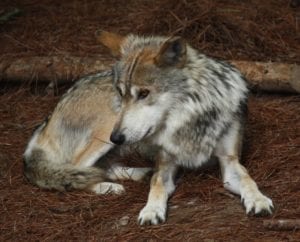
Currently, all wild Mexican gray wolves live in or near the Blue Range of Arizona and New Mexico. Expert science teams assembled by Fish and Wildlife have concluded that a necessary condition for Mexican gray wolf recovery is that there be at least three interconnected populations in three separate recovery areas, each hosting a minimum of 200 individuals, with a minimum total population of 750. These three populations must also be accessible by dispersing wolves so that genetic exchange can occur. Based on the best available science and considerations of historic range and suitable current habitat with sufficient wild prey, these scientists have recommended that one of these populations be established in the San Juan Mountains of southwest Colorado and another be centered on the Kaibab Plateau north of the Grand Canyon. Obviously, if Mexican gray wolf populations are established in these places, they will eventually expand into Utah.
Utah officials have been angrily fighting against this science-based recommendation for several years now. Most Utah politicians seem to hate wolves more than the devil. They are committed to the outdated belief that the wolf is a monster that cannot be tolerated. Sadly, the Utah Division of Wildlife Resources has done nothing to correct this misperception. Instead, it is helping to foster it. State wildlife managers are unwilling to even consider the possibility that allowing wolf populations to become reestablished in the state might actually be a net good: good for wolves, good for ecosystems, and good for Utah’s economy. Nor will they acknowledge that, according to survey data referenced in Utah’s Wolf Management Plan, the majority of Utahns have a favorable opinion of wolves and believe that there is a place for wolves in Utah.

This attitude emboldens wolf haters and has the potential to produce dangerous confrontations. In May, three anti-wolf activists angrily threatened to disrupt a presentation about Mexican gray wolves scheduled at the BLM Visitor Center as part of a festival in Kanab. Because of this, the sponsoring organization felt it necessary to cancel the presentation and it was subsequently relocated to a private residence. This kind of behavior must not be tolerated.
Let’s have more wolves and less politics! The Mexican gray wolf is hanging from the precipice of extinction by its paws. It needs our help, our ecosystems and wildlife communities need its presence to be healthy, and a majority of Utahns would welcome it back. Despite all this, the people who run our state have their sights set on preventing it.
We can foil them. Visit mexicanwolves.org to learn how you can help.
Dr. Kirk C Robinson is executive director of the Western Wildlife Conservancy.




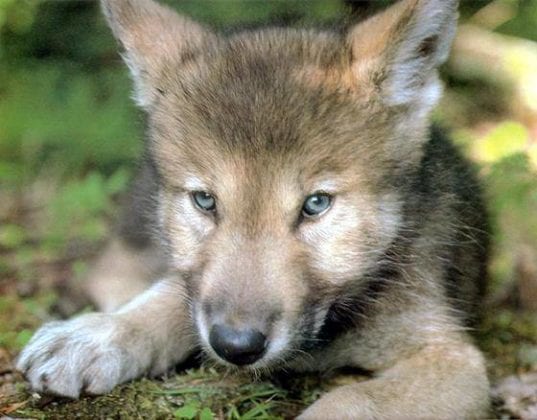
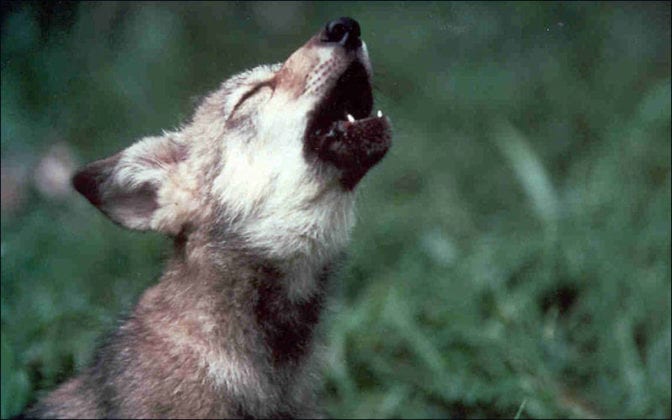
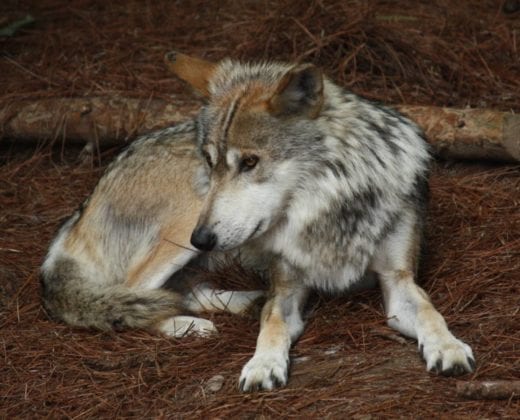
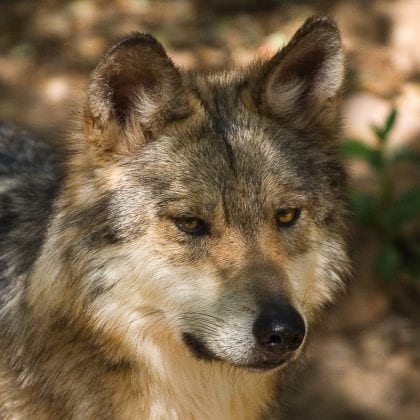
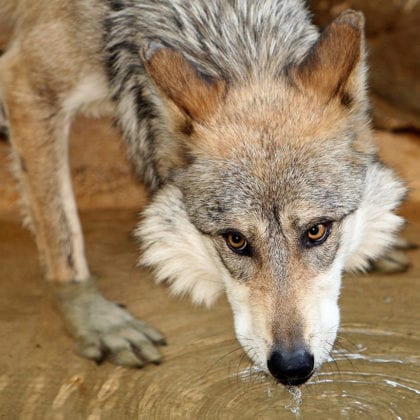
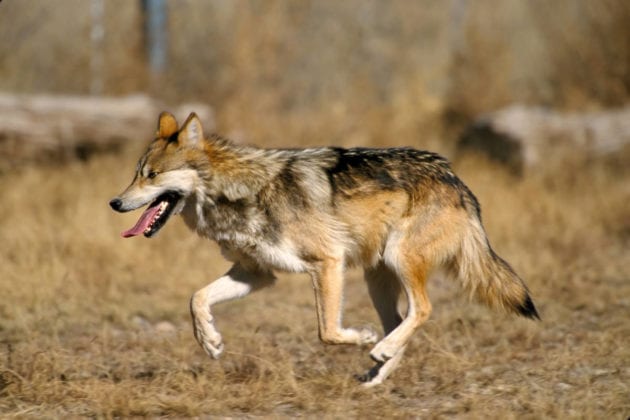



I am stunned by the total lack of science being used by state wildlife agencies and governments to make decisions about the fate of the Mexican gray wolf. Are any of these people actually qualified to to be participating in wildlife recovery decisions?
Amen, Kim!
I have seen the UT wildlife “experts” in action in a number of meetings. They are entirely in sync with public lands ranchers and have vowed that there will NEVER be any more wolves, of any species, allowed in Utah. So much for science and the public’s interest in same.
This is the same mindset that the BLM is using to roundup the wild horses to extinction with the welfare ranchers pushing for complete removal of all of them so their cows and sheep get to graze to their hearts content on public land with the taxpayers footing the bill of course. No wolf or mustang is safe in any of these western states the wolves should have been located from the beginning in states that might have protected them Washington would have been a good place because there is at least two breeding pairs here that are raising pups. The wolves here are protected by law one of the reasons is the ranchers can hire what is called range riders that is on horseback patrolling the cattle herds that run off any wolf that they spot without hurting it or shooting it.
A lot of the ranchers are buddies with the politicians in these western states and they pay more attention to them because of donations and cash under the table.